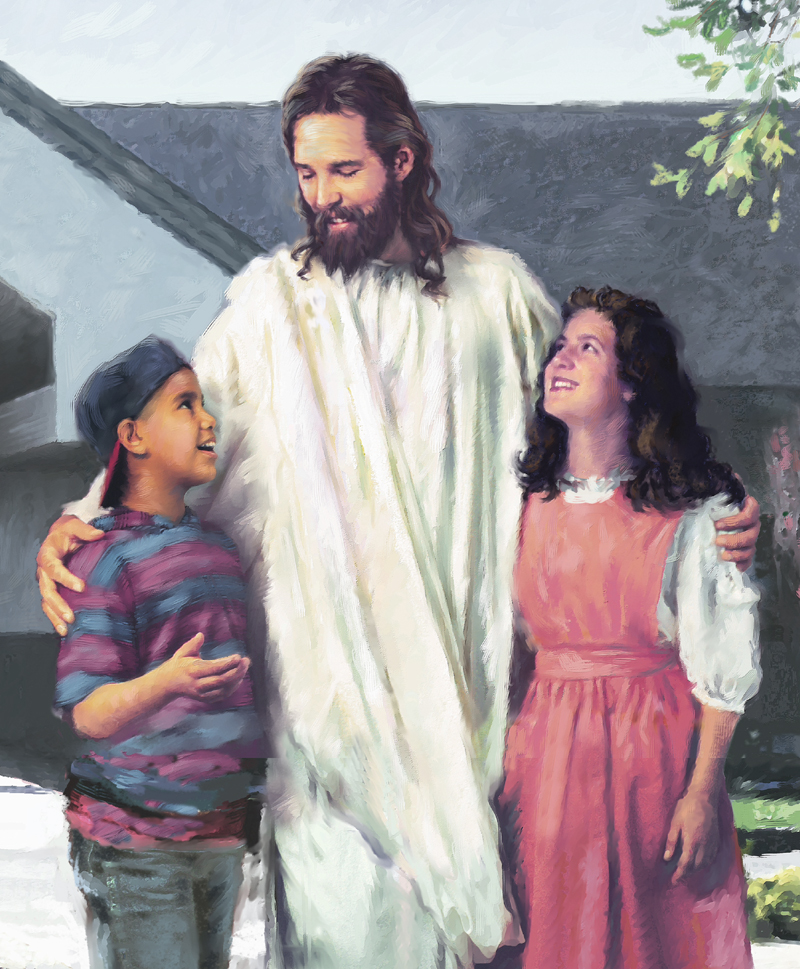How was jesus as a child
Jesus’ Childhood
John 21:25 tells us that there were so many remarkable incidents in the life of Jesus Christ, that if they were all written down, the number of volumes would be beyond measure. What He accomplished in the 3½ years of His ministry is astounding.
Thankfully, we have four Gospel writers who record a great deal of what took place, including specific details surrounding His birth. These glimpses are provided that we “may believe that Jesus is the Christ, the Son of God, and that believing [we] may have life in His name” (John 20:31).
The Gospel accounts provide rich details regarding the ministry of Jesus Christ. However, many have questions about the life of Jesus before His ministry.
- Where did Jesus grow up?
- What was Jesus like as a young child and as a boy growing toward adulthood?
- Did Jesus have siblings and friends?
- Was Jesus a carpenter?
While answers to many of these questions remain shrouded, the biblical narrative provides some clues about these missing years.
Jesus as a child
The environment in which Jesus grew up was complicated by religious and political forces at work in Judea and the surrounding territories. Many acknowledge Jesus’ birthplace was Bethlehem (Luke 2:4-7), a city long associated with the family of David.
Jesus would not stay long in His ancestral city. Shortly after His birth, Joseph and Mary brought Jesus to the temple in Jerusalem (Luke 2:22-38). Within months, the family would journey by night to Egypt to escape the murderous rampage of King Herod (Matthew 2:13-18). In Egypt, the family found safe haven until Herod’s death, when the family returned home.
But Jesus did not grow up in the area of Bethlehem or Jerusalem. Instead, Jesus’ childhood home was in Nazareth, a city of Galilee (Matthew 2:19-23; Luke 2:39).
Luke 2:40 gives a summary statement describing Jesus’ development from infancy to age 12: “And the Child grew and became strong in spirit, filled with wisdom; and the grace of God was upon Him. ”
”
Jesus’ family life
Jesus grew up in a bustling, growing family. Matthew makes clear that Joseph and Mary did not have children before Jesus’ birth (Matthew 1:24-25). However, the Bible tells us Jesus had several younger half-siblings, children of Joseph and Mary.
Matthew names four brothers—James, Joses, Simon and Judas (Matthew 13:55). There were also at least two sisters (verse 56). Thus, Jesus was the oldest of at least seven children.
His stepfather, Joseph, was a carpenter (verse 55). This occupation is generally understood to be someone who works with wood. However, The Expositor’s Bible Commentary explains this word “can mean ‘carpenter’—one who works with wood—or perhaps even ‘builder,’ in a time and place when most homes were made of mud brick” (Revised Edition, 2010, Vol. 9, p. 384).
This occupation would require skill, patience and hard work—all traits Jesus would have observed during His childhood.
Was Jesus a carpenter?
Mark records that Jesus Himself was referred to as “the carpenter” (Mark 6:3). During His life, it was customary for boys to be apprenticed in the occupation of their father. Thus, as the oldest son in the household, it seems probable that Jesus would have been trained and employed as a carpenter.
During His life, it was customary for boys to be apprenticed in the occupation of their father. Thus, as the oldest son in the household, it seems probable that Jesus would have been trained and employed as a carpenter.
While the biblical narrative does not expound on this point, it is perhaps likely that Jesus used His carpentry skills to support Himself until beginning His ministry.
Jesus was raised in a religious home
In addition to telling us of Jesus’ numerous siblings and Joseph’s occupation, the Bible also shows that Jesus was reared in a devoutly religious home. His family faithfully followed God’s instructions concerning the annual religious festivals.
Luke records that Jesus’ family made annual pilgrimages to Jerusalem for the feast of Passover and Days of Unleavened Bread (Luke 2:41-42).
Interestingly, social scientists today have confirmed the benefits for children growing up in a religious environment.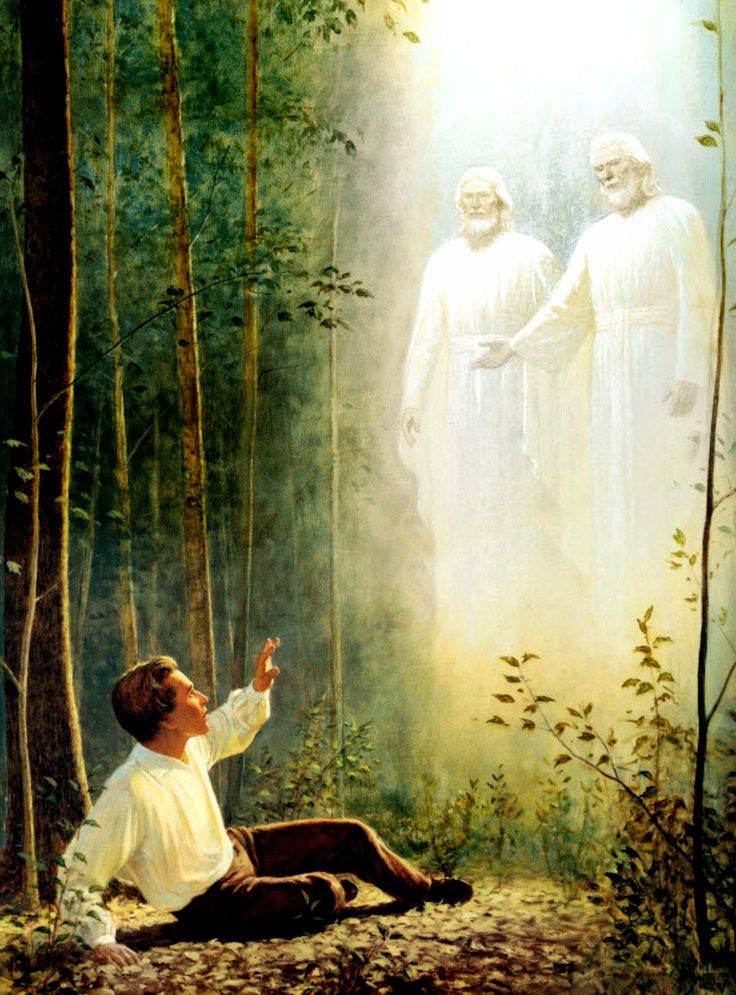 Dr. Pat Fagan is the director of the Center for Research on Marriage and Religion and senior fellow at the Marriage and Religion Research Institute in Washington, D.C.
Dr. Pat Fagan is the director of the Center for Research on Marriage and Religion and senior fellow at the Marriage and Religion Research Institute in Washington, D.C.
After compiling the findings of over 100 independent social scientists over the last two decades on the effect that church attendance has on the lives of kids, he said, “When policymakers consider America’s grave social problems, including violent crime and rising illegitimacy, substance abuse, and welfare dependency, they should heed the findings in the professional literature of the social sciences on the positive consequences that flow” from faithful church attendance (Rob Kerby, “Church Kids Less Likely to Divorce or Live in Poverty,” beliefnet.com).
Learning at an early age that there is a God and that each person is made in His image provides a healthy atmosphere for well-adjusted children. Joseph and Mary furnished a home centered on God’s love, His commandments and His way of life, which is undoubtedly one reason God selected them to provide His Son’s early childhood development.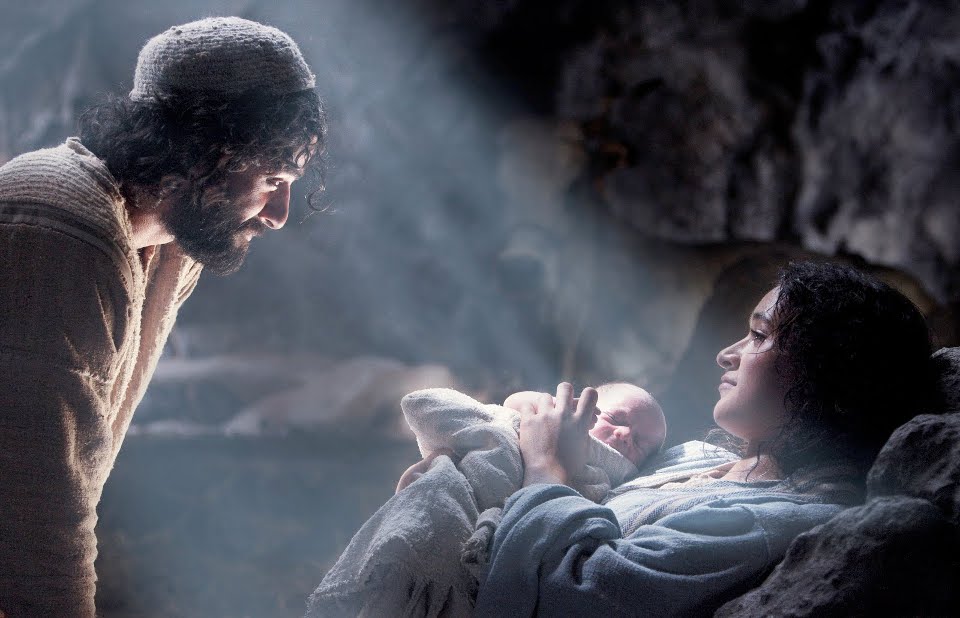
Jesus was an exceptional Child
Jesus experienced a natural maturing process similar to any growing boy, but He was especially endowed with God’s Spirit and favor from birth so that He was far advanced beyond other young men when it came to grasping the Word of God and spiritual principles.
Interestingly, Luke’s account of Jesus’ life tells of something that took place when Jesus was 12 years of age. There is much we can learn from this fascinating story, which is only found in the Gospel of Luke.
Luke 2:43-44 begins to give some interesting insight into the dynamics of Jesus’ special family. After the festivals, as the family caravan was a day’s journey from Jerusalem on their way toward home, it was discovered that Jesus was not with the group. How could they have gone so far without realizing this?
First of all, Jesus must have been a boy who had earned His parents’ confidence and trust. Joseph and Mary were obviously relying on Jesus to act in a responsible manner during the trip home from Jerusalem.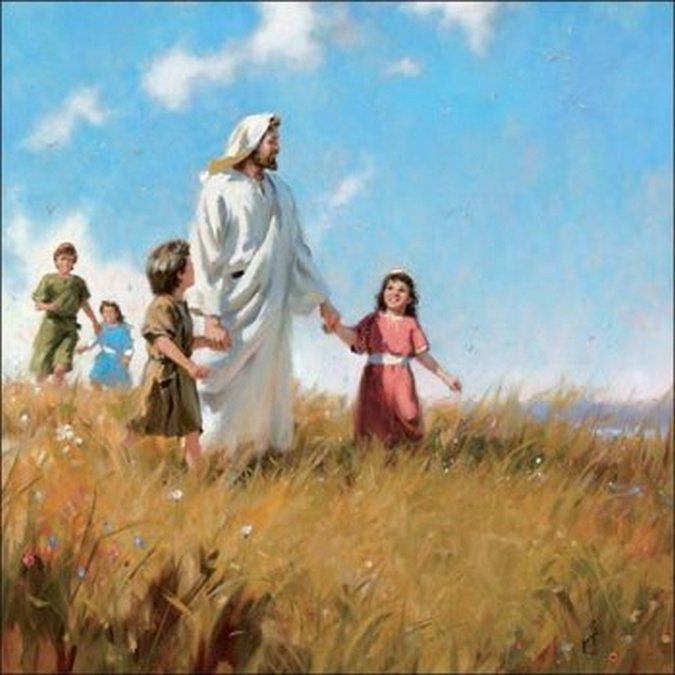
They had learned by this time that their oldest child was a very reliable, capable and dependable youth. Had He been unpredictable or immature, then they would have felt the need to oversee His whereabouts more closely. But apparently they had no reason to expect anything out of the ordinary.
They were startled to find that He was not with the caravan. Filled with concern, they spent the next day traveling back to Jerusalem with great consternation, hoping to find Him safe.
Joseph and Mary assumed He was traveling with another family or relatives and didn’t inquire as to His whereabouts until later that day. This was understandable behavior on their part since there was no way they could have envisioned anything other than reliable conduct from their Son and a normal trip home to Nazareth after the Passover festival.
They were startled to find that He was not with the caravan. Filled with concern, they spent the next day traveling back to Jerusalem with great consternation, hoping to find Him safe.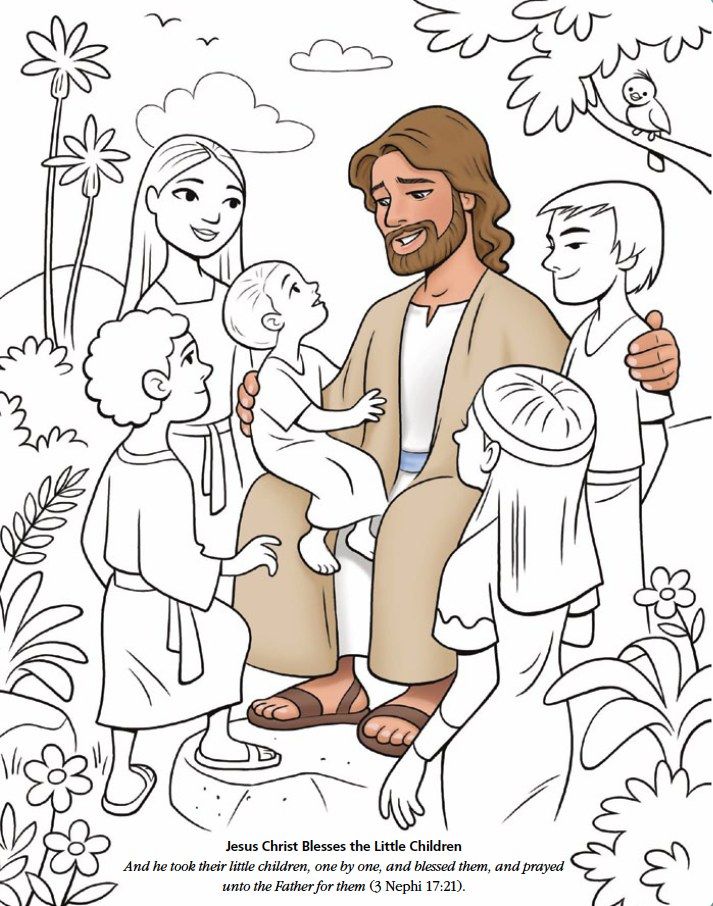
The boy Jesus at the temple
It appears it was on the third day after the festival that they found Him in the temple area. He was not playing with other boys, lost or even scared to be on His own. He was instead involved in serious discussions with some of the learned teachers of the law in Jerusalem, “both listening to them and asking them questions” (Luke 2:46).
Rather than being annoyed by one so youthful, these intelligent men were astounded by Jesus’ questions and responses and, most importantly, by His grasp of deep theological topics. Luke’s account says, “All who heard Him were astonished at His understanding and answers” (verse 47). Truly they were in the presence of a very divinely gifted young man.
Once He was located, Joseph and Mary were relieved to find Jesus safe. Yet at the same time they were bewildered by their Son’s surprising behavior and seeming lack of appreciation for the anxiousness He had caused.
Mary took the lead in asking what it all meant. It seems Joseph remained quiet for the moment and allowed her to speak for them both. Perhaps it was because Jesus was conceived in her womb or because, being a concerned mother, she was the one more emotionally distraught after the days of searching, but Mary now sought an answer from her Son.
It seems Joseph remained quiet for the moment and allowed her to speak for them both. Perhaps it was because Jesus was conceived in her womb or because, being a concerned mother, she was the one more emotionally distraught after the days of searching, but Mary now sought an answer from her Son.
Jesus’ mother showed wisdom and self-control in that she first inquired about her Son’s intent. She asked in verse 48, “Son, why have You done this to us? Look, Your father and I have sought You anxiously.”
Many parents would automatically allow their frustration or anger to dictate their action and might lash out at their child for causing such distress, but she apparently knew her Son had never been irresponsible or rebellious and so she sought an honest understanding of what He was doing.
“I must be about My Father’s business”
Jesus responded to His mother’s inquiry by saying, “Why did you seek Me? Did you not know that I must be about My Father’s business?” (verse 49).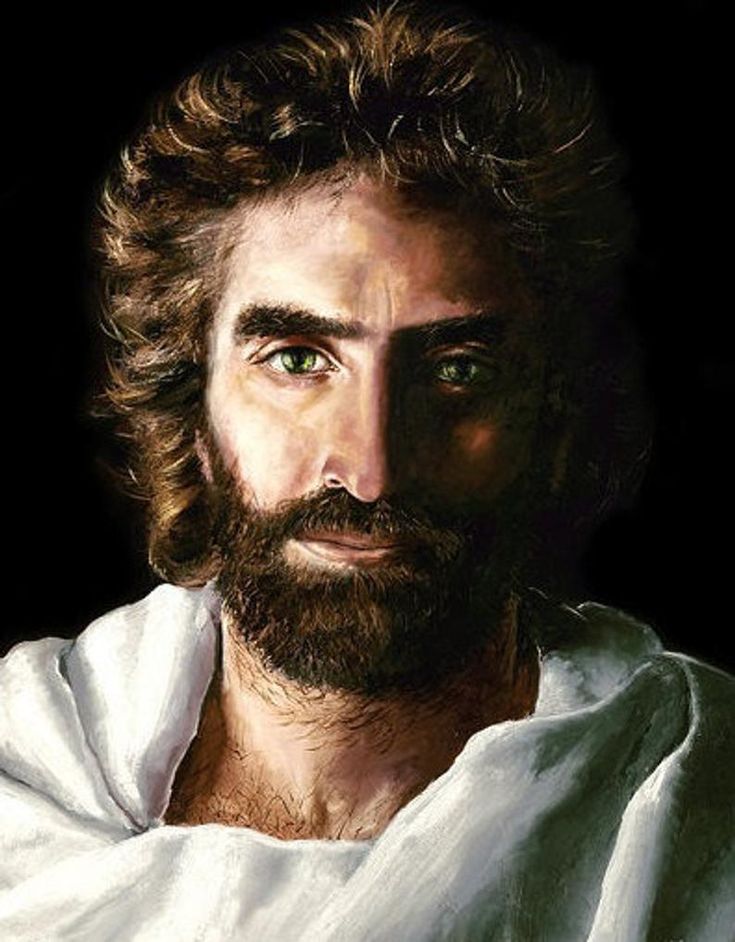
Jesus did not give prior warning that He intended to remain in Jerusalem. Perhaps He hoped that Joseph and Mary would conclude that He had important work to accomplish and that they would not worry when He turned up missing.
Spiritual understanding
Jesus must have had some very profound conversations with His parents growing up. His mother would have related the story of His birth and what Gabriel said when he appeared to her nine months prior to His birth.
Jesus also had His Father’s Spirit without measure (John 3:34). He had a strong grasp of His own purpose for being on the earth. The zeal to please His Heavenly Father and do the work of God would have burned strongly in Him even at this time in His young life.
So, perhaps Jesus felt His parents, on this occasion, would consider all this and that it would allay any anxiety concerning His whereabouts. Of course, parental concern for their 12-year-old was so strong that they were not fully able to understand what He said to them (Luke 2:50).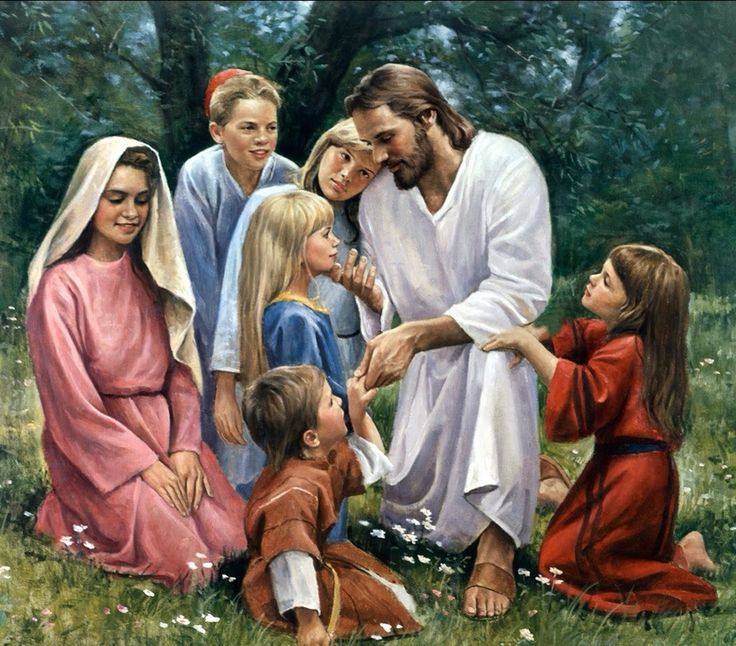
Now that His parents had returned for Him, Jesus knew He would later launch into His life’s work and undertake His Father’s business. But for now Jesus determined to return to Nazareth and continue to be subject to Joseph and Mary (verse 51).
Jesus’ Heavenly Father did not intend His Son to begin His great public ministry for another 18 years. By then He would be ready to face the greatest challenge any man could ever face.
Why did Luke record the story of Jesus as a boy in the temple?
There is a reason God inspired Luke to record this amazing account in Jesus’ childhood. We see from this circumstance that this extraordinary family went through life experiences as any normal family does, with real feelings, emotions, cares and sometimes confusion felt by family members, including Jesus’ brothers and sisters (see John 7:3-4).
All three of the key players in this account showed godly responses to the circumstances they faced and ended up maturing as individuals.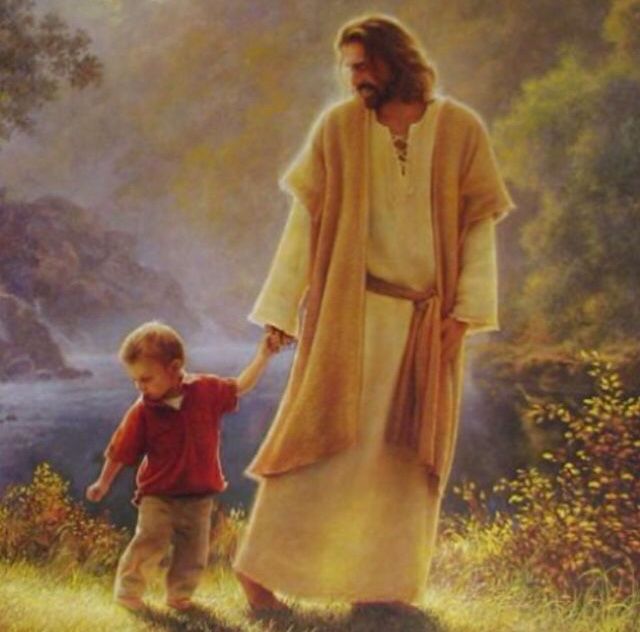 Joseph and Mary had much to ponder concerning their Son and His special gifts, and Jesus grew in understanding of His role as a son and emerged with a greater grasp of God’s will for Him. Yet, through it all, no one sinned and the parent-child relationship was strengthened not damaged.
Joseph and Mary had much to ponder concerning their Son and His special gifts, and Jesus grew in understanding of His role as a son and emerged with a greater grasp of God’s will for Him. Yet, through it all, no one sinned and the parent-child relationship was strengthened not damaged.
What guided these three individuals are the principles found in God’s Word, the Bible. They were also helped by the Holy Spirit that came from our Heavenly Father.
If you would like to learn more about God’s purpose for your life and how that Spirit and truth can guide your life, we hope you’ll download and read more in the booklet God’s Purpose for You.
The Life of Jesus Christ: Jesus as a Kid
Luke 2:40-52
This passage in Luke 2 is the only account of any of the so-called “hidden years” of Jesus’ childhood. John and Mark’s gospel begin with Jesus’ public ministry as an adult. Matthew records the birth of Jesus through a focus on Joseph and then moves directly to the ministry of John the Baptist and the baptism of Jesus. Only Luke, who records the longest and most detailed account of Jesus’ birth and the prophecies and angelic witnesses surrounding it, shares a story from these hidden years. It happens when Jesus is twelve years old and occurs during the annual pilgrimage to Jerusalem from Nazareth for Passover.
Only Luke, who records the longest and most detailed account of Jesus’ birth and the prophecies and angelic witnesses surrounding it, shares a story from these hidden years. It happens when Jesus is twelve years old and occurs during the annual pilgrimage to Jerusalem from Nazareth for Passover.
Why is it important for us to see Jesus as a kid? Why would Luke include this episode?
Perhaps the answer is in the center of this story, which is the statement from Jesus in verse 49. These words, and this is not unimportant, are the first words Jesus speaks in the Gospel of Luke. Consider the weight and import of the first words of a story’s hero and focus. In response to Mary’s very frightened and frustrated “mom” question, Jesus respond, “Why is it that you were looking for Me? Did you not know that I had to be in My Father’s house?”
There are at least three key things we need to see and expand upon in this single statement. First, notice Jesus’ compulsion. He had a divine directive and understands his place in the temple as a necessity. Second, Jesus fully understands His relationship to God the Father and sees it appropriate to be in His presence on the earth, which was in the Holy of Holies within the Temple. Finally, third, we see in Jesus’ statement the fact that His relationship and proximity to the Father takes precedent over all other relationships in His life, including His relationship with His earthly family.
Second, Jesus fully understands His relationship to God the Father and sees it appropriate to be in His presence on the earth, which was in the Holy of Holies within the Temple. Finally, third, we see in Jesus’ statement the fact that His relationship and proximity to the Father takes precedent over all other relationships in His life, including His relationship with His earthly family.
We need not see this story as evidence that Jesus was being a sassy or belligerent kid. Luke makes it clear that Jesus was not being this way, in Luke’s typical style of strict clarity. We see this in the summary and response statement in verse 51. “And He went down with them and came to Nazareth, and He continued in subjection to them.”
With this balancing statement of context, we can finally see the story for what it is meant to be, a pronouncement event. In many ways, at least in the Gospel of Luke, this event serves alongside Jesus’ baptism and His triumphal entry as three key events where He announces His identity, ministry focus and fulfillment of God’s plan/prophecy. These announcements are obviously veiled in some way to protect the timing and trajectory of Jesus’ ministry, but they are pronouncements nonetheless.
These announcements are obviously veiled in some way to protect the timing and trajectory of Jesus’ ministry, but they are pronouncements nonetheless.
Jesus, even at this young age, clearly understood His identity. His “son of God” status was not something later “given” to Him at His baptism or later understood. He did, however, mature and “grow” in wisdom and stature. In this we see Jesus as maturing spiritually, physically and relationally. This is part of the point of the story. It is both beautiful and challenging to see Jesus as a kid, growing and learning and exploring and understanding.
He also clearly understood His mission and His relationship to God the Father. The reference to “My Father” would have been so wildly out of place and radical to the Jews of Jesus’ day. No one, even the great rabbis, would have dared to say such a thing of God. This fact might be lost on us who fail to see Jesus’ words and deeds through eastern eyes in ancient times.
Consider how critical it is for us to see Jesus as a real person, a full human. This is a major force in the Gospel accounts of Jesus because only a read Jesus can qualify as a real savior. As humans, our sin problem is a real problem, a deadly problem. It is our problem, not God’s. So it follows that only man should pray for sin. However, our sin is an offense agains the holiness of an infinite God. It follows that only an infinite God can solve that problem. Thus only a man should pay for sin, and only God can pay for sin. This is why Jesus, the eternal Son of God, entered fully into humanity, in a time and place. Leaving none of His Deity behind, He did voluntarily release some of His divine prerogatives. Fully God, fully man. Only a real Jesus qualifies as a real Savior.
This is a major force in the Gospel accounts of Jesus because only a read Jesus can qualify as a real savior. As humans, our sin problem is a real problem, a deadly problem. It is our problem, not God’s. So it follows that only man should pray for sin. However, our sin is an offense agains the holiness of an infinite God. It follows that only an infinite God can solve that problem. Thus only a man should pay for sin, and only God can pay for sin. This is why Jesus, the eternal Son of God, entered fully into humanity, in a time and place. Leaving none of His Deity behind, He did voluntarily release some of His divine prerogatives. Fully God, fully man. Only a real Jesus qualifies as a real Savior.
Believe me friend, you and I need a real Savior.
Family Discussion Questions:
1. What do you think Jesus was like as a kid? As a ten-year-old? A teenager?
2. What does this passage - the only one in the Bible about Jesus as a kid - tell us about Jesus’ relationship with His parents?
3. What does it tell us about Jesus’ relationship with God the Father?
What does it tell us about Jesus’ relationship with God the Father?
4. This passage contains the first words of Jesus in Luke’s Gospel. Read Luke 2:49 again. Discuss what Jesus’ statement reveals to all who read this story.
5. Did Jesus know who He was? Did Jesus know how He related to God? Did Jesus know what He came to earth to do? Discuss with you family.
Small Group Discussion Questions:
1. Do you think the first words of Jesus in each Gospel are important to the writer of that Gospel and his theme or purpose? Find the first words of Jesus in each Gospel and read them out. Discuss with your group.
2. What does this story in Luke 2 reveal about Jesus’ awareness of His own identity?
3. What does it reveal about Jesus’ knowledge of His relationship to God the Father?
4. What does it reveal about Jesus’ acceptance of His mission?
5. Why do you think it is important for us to see and hear Jesus as a kid? What could be Luke’s purpose in including this story?
6. How do you understand Jesus’ deity and humanity? What does the Scripture say about this? (For a start see Colossians 1:15-20 and 2:9)
How do you understand Jesus’ deity and humanity? What does the Scripture say about this? (For a start see Colossians 1:15-20 and 2:9)
7. What does Jesus’ full humanity mean to us who believe and follow Him?
Posted in Sermon Notes
Childhood of Jesus - Childhood of Jesus - New Testament - Articles
The lack of a detailed story about the childhood of Jesus Christ among the Evangelists gave rise to many legends, traditions, tales and apocrypha. A review of these religious works allows us to conclude that they not only aim to fill the gap of missing information about the childhood of Jesus Christ, but also have a different focus in the coverage and presentation of these events. For example, in legends and legends, the child Jesus Christ is endowed with a whole range of abilities for miracles and a description of the miracles He performed is given. In the apocrypha there are stories of opponents of Christianity, deliberately distorting the Divine image of Jesus Christ as a child and falsely attributing unnecessary cruelty and senseless evil deeds to Him. Before getting acquainted with the childhood of Jesus Christ, we will briefly consider non-gospel stories on this topic in order to distinguish truth from fiction and, when confronted with such stories, be able to give them an objective and fair assessment.
Before getting acquainted with the childhood of Jesus Christ, we will briefly consider non-gospel stories on this topic in order to distinguish truth from fiction and, when confronted with such stories, be able to give them an objective and fair assessment.
The most famous non-Gospel stories that characterize the childhood of Jesus Christ include the following books. "The Arabic Gospel of Childhood". This book is also called "The Gospel of Pseudo-Matthew" because of its inaccuracies. "The Gospel of James", which speaks of the childhood of Jesus Christ. And also the "Gospel of Childhood", or as this book is also called the "Gospel of Thomas". In addition to the apocryphal gospels, which are either completely devoted to describing childhood, or contain fragmentary episodes from childhood Jesus Christ, there are legends on this subject." For example, legends tell how wild animals, even lions and dragons, became tame and obedient near this Child, as if He were a new Orpheus, taming the predatory rampage with the music of His soul, then for us in this evidence of His amazing calming power, which acted on the environment. And it is very possible that this power was so great that animals, dangerous or shy, actually felt calm next to him, and were imbued with gullibility, absorbing the reflection of the unearthly charm and love of His being. After all, He was the incarnation of the Heavenly Soul, which in ancient times was used by the Highest Heavenly Will to humble the animal savagery in a human being and bring its spiritual forces into harmony” (Emil Bock “The Childhood and Youth of Jesus Christ”, Moscow, Enigma Publishing House, 1996, p. 134).
And it is very possible that this power was so great that animals, dangerous or shy, actually felt calm next to him, and were imbued with gullibility, absorbing the reflection of the unearthly charm and love of His being. After all, He was the incarnation of the Heavenly Soul, which in ancient times was used by the Highest Heavenly Will to humble the animal savagery in a human being and bring its spiritual forces into harmony” (Emil Bock “The Childhood and Youth of Jesus Christ”, Moscow, Enigma Publishing House, 1996, p. 134).
As you can see, Emil Bock explains the legends in which animals submitted to Jesus Christ symbolically, as an example of the fact that Jesus Christ came into the world in order "to humble the animal savagery in a human being and bring his spiritual forces into harmony." Such an explanation E. Boca is wrong, because Jesus Christ came into the world of people in order to save them with His redemptive sacrifice, and only through the fulfillment of His teaching to give them the opportunity to enter the Kingdom of Heaven, which is confirmed by the words of Jesus Christ Himself in many places of Scripture. The Savior called for achieving the humility of animal passions precisely in the Christian way, and not in any other way. "I am the door: whoever enters by Me will be saved, and will go in and out, and find pasture" (John 10:9).). "Jesus said to him: I am the way and the truth and the life; no one comes to the Father but through Me." (John 14:6). And in addition to the humility of animal passions, the Savior called for the improvement of the spiritual nature by Christian methods, in contrast to the remarks of Bock, who does not take this into account.
The Savior called for achieving the humility of animal passions precisely in the Christian way, and not in any other way. "I am the door: whoever enters by Me will be saved, and will go in and out, and find pasture" (John 10:9).). "Jesus said to him: I am the way and the truth and the life; no one comes to the Father but through Me." (John 14:6). And in addition to the humility of animal passions, the Savior called for the improvement of the spiritual nature by Christian methods, in contrast to the remarks of Bock, who does not take this into account.
In order to affirm the divinity of the Child, Jesus Christ, the so-called "Arabic Gospel of Childhood" writes: "Jesus Christ already spoke as He lay in His cradle. He said to His parent: “I am Jesus Christ, the Divine Son, I am the Logos” (Arabic Gospel, chapter 1). The occultist Rudolf Steiner writes the same: “Tradition quite rightly says that He immediately knew how to speak, even in incomprehensible for all other languages. But precisely what was in this language from birth, as the legend says, is quite reliable, for this is also confirmed by the occult way. ("Von Jesus zu Christus", Voltrag, vom 12, Jkoboer 1911, GA 131).
("Von Jesus zu Christus", Voltrag, vom 12, Jkoboer 1911, GA 131).
To confirm the Divine abilities in this book (pp. 134-135), Emil Bock mentions the legends that tell about the miracles created by the child, Jesus Christ. "There are countless apocryphal legends of childhood about miraculous healings performed by this Child, or performed in His presence, and through contact with objects that He had previously touched. We can hardly be mistaken in assuming that these legends most directly convey real events, and that their images, more than anywhere else, can be interpreted as events, not only of the mental order, but also of the physical. His being and directly spread healing benefits around Himself.”
Mentioning the legends associated with the childhood of Jesus Christ, Emil Bock interprets them only from the point of view of the occult, presenting Jesus Christ as a source of some mysterious energy, under the influence of which objects even come to life. “When the legends tell how this Child, in a dreamy game, molded birds from clay, and they came to life at His word, and took off, we feel here a special life-giving force, which, coming from His being, embraced everything that was nearby. This Child was truly a source of eternal youth” (Emil Bock, specified edition, p. 134). Drawing the image of the child-Christ in the form of a source that spreads a “special life-giving power”, which, based on His being, covered everything that was nearby” E. Bock thereby distorts the appearance of the child-Jesus Christ, from Whom emanated not some kind of life-giving force, faceless and special, but the Grace of God, which is not just energy.
This Child was truly a source of eternal youth” (Emil Bock, specified edition, p. 134). Drawing the image of the child-Christ in the form of a source that spreads a “special life-giving power”, which, based on His being, covered everything that was nearby” E. Bock thereby distorts the appearance of the child-Jesus Christ, from Whom emanated not some kind of life-giving force, faceless and special, but the Grace of God, which is not just energy.
According to an early Christian legend told by the Gnostic Justin, the Child, Jesus Christ, spent a lot of time with the flocks as a shepherd. This legend tenderly paints an idyllic picture in which the Child, Jesus Christ, against the backdrop of the picturesque meadows of Nazareth, guards His sheep, takes care of them in every possible way. This legend is reflected in many statues and paintings and frescoes, where Jesus Christ is represented as a young shepherd, Shepherd, with a lamb in his arms or around his neck, surrounded by lambs.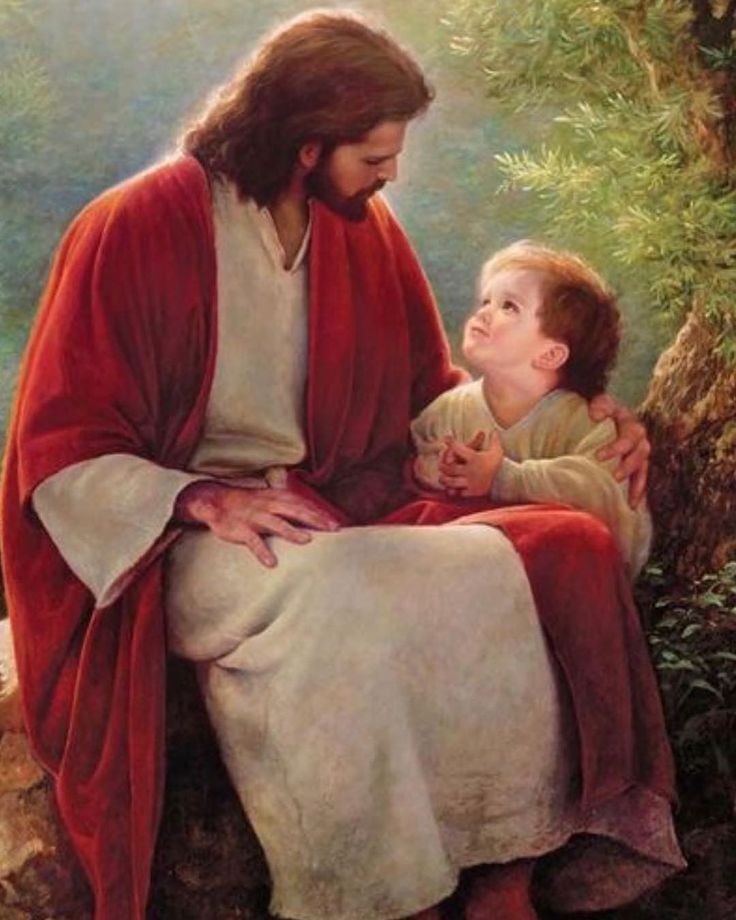
The child Jesus not only spent all his free time with the flocks, but, according to some legends, he also studied. “It invariably tells how the Child not only amazes teachers with His unusually quick, lively mind, but also surpasses their knowledge. Teacher and student change places: The latter teaches the former. True, the legends say for the most part that the teachers were furious, and even But be that as it may, these stories reflect a bit of the boy’s amazing giftedness and the extraordinary knowledge that existed from the ages, which teachers constantly discover in Him. ”(Emil Bock, specified edition, p. 142).
Emil Bock, describing the childhood of Jesus Christ in his book, claims without evidence that Nazareth was not a city, but was a colony of the Essenes sect, who supposedly raised Jesus Christ in spiritual purity and high morality. Allegedly, it was under the influence of the Essenes that the childhood of the Savior passed. "Nazareth was neither a city nor a village in the usual sense. In terms of its size, it was apparently an inconspicuous settlement. Scholars generally doubted whether it existed in this era, and partly still doubt it. Apart from the Gospels, virtually nowhere in historical traditions and Documents until relatively late do not contain a mention of Nazareth. The reason for this, however, is that Nazareth was not an open settlement, but a strictly closed colony of Essenes. Nazareth means "the city of Nezer". That is, this colony was named after the founder of Nether, one of the five disciples of Joshua ben Pandira” (Emil Bock, cited edition, p. 118).
In terms of its size, it was apparently an inconspicuous settlement. Scholars generally doubted whether it existed in this era, and partly still doubt it. Apart from the Gospels, virtually nowhere in historical traditions and Documents until relatively late do not contain a mention of Nazareth. The reason for this, however, is that Nazareth was not an open settlement, but a strictly closed colony of Essenes. Nazareth means "the city of Nezer". That is, this colony was named after the founder of Nether, one of the five disciples of Joshua ben Pandira” (Emil Bock, cited edition, p. 118).
Contrary to the false and unsubstantiated statements of E. Bock and according to historical truth, Nazareth was a small, provincial town, which, contrary to the expressed doubts of Emil Bock, still existed. This fact is confirmed not only by Scripture, but also by other historical sources. According to the reports of a number of researchers, Nazareth was never a colony of the Essenes, but was an ordinary small town in which the Essenes sect existed. However, not all the inhabitants of Nazareth were Essenes. The false statement of Emil Bock that Nazareth is a colony of Essenes was necessary for him in order to show that the Savior's childhood passed in an Essene colony, and that the child, Jesus Christ and later on His teaching, was allegedly greatly influenced by the life of the Essenes their morality and philosophy. Such a statement by E. Bock is incorrect, because Jesus Christ, as the eternally born God, had His own, eternally formed teaching, and did not borrow it from anyone, especially from the Essenes.
However, not all the inhabitants of Nazareth were Essenes. The false statement of Emil Bock that Nazareth is a colony of Essenes was necessary for him in order to show that the Savior's childhood passed in an Essene colony, and that the child, Jesus Christ and later on His teaching, was allegedly greatly influenced by the life of the Essenes their morality and philosophy. Such a statement by E. Bock is incorrect, because Jesus Christ, as the eternally born God, had His own, eternally formed teaching, and did not borrow it from anyone, especially from the Essenes.
E. Bock writes about the fact that the Holy Family was under the influence of the Essenes. "Perhaps among the Nazarene laity, who make up a close circle, the Essenes proper, there were people who possessed an infantile soul and heavenly innocence, and that is why they were attracted to this brotherhood or brought closer to it by the Essenes-mentors as the most suitable. Among these, Joseph the carpenter and his very young wife, Maria, stood out especially for their infantile and innocent soul” (E.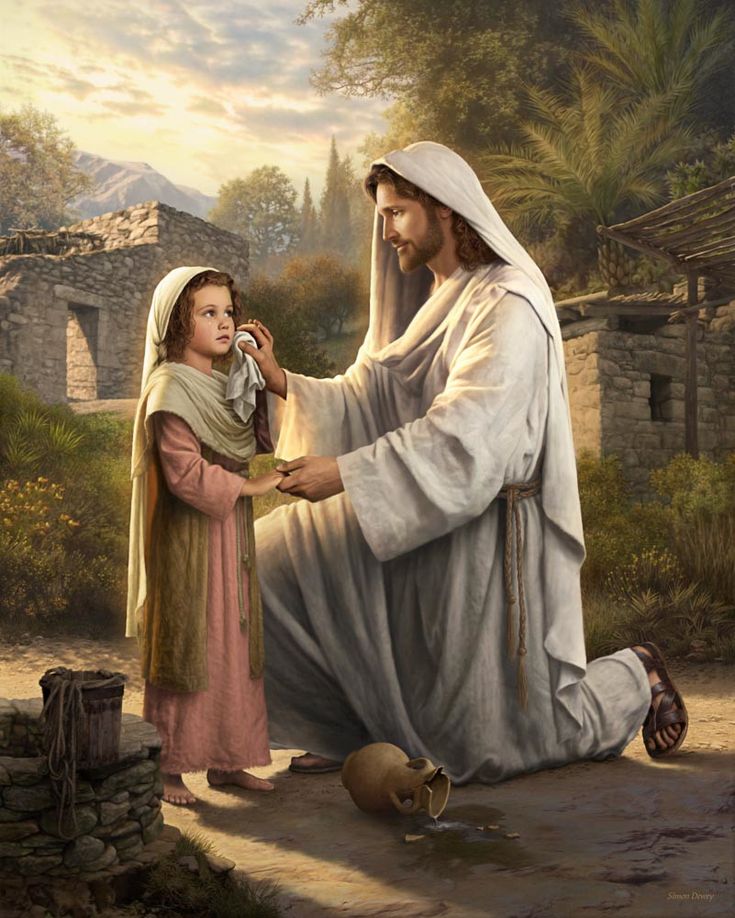 Bock, cited edition, p. 120).0003
Bock, cited edition, p. 120).0003
In order to substantiate his false assertion that the childhood of Jesus Christ, like the life of the Holy Family, passed under the influence of the Essenes, E. Bock idealizes and praises this sect in every possible way. "The community (of the Essenes), which at the turn of the epochs lived in Nazareth as a strictly closed pious colony, strove with all the strength of the soul to develop spiritual life in such a way that the human being, if possible, remained close to heaven and did not plunge into an overly earthly material world and into an overly human world of passions. ” (E. Bock, cited edition, p. 111)
Further, E. Bock resorts to an obvious falsification, falsely asserting that the book of Isaiah allegedly speaks of a sect of Essenes from Nazareth, who have a beneficial effect on the upbringing and childhood of Jesus Christ. "The name of Nezer, the founder of the Nazareth colony, means "sprout, fresh branch." Starting from the 11th chapter of Isaiah, this name was the Messianic key word: "And there will be a branch from the root of Jesse. " The branch of esaism, which ascended to Nether and to which the Nazarene community belonged, accordingly set the goal, first of all, to maintain pure heredity: for the incarnation of the Messiah It was necessary to prepare a vessel of pure physicality. That is why it was in Nazareth, "the city of the branch from the root of Jesse" that the leaders of the Essenes made special efforts to protect the relationship between the sexes and marriages from immersion in too earthly "(E. Bock, specified edition, p. 121).
" The branch of esaism, which ascended to Nether and to which the Nazarene community belonged, accordingly set the goal, first of all, to maintain pure heredity: for the incarnation of the Messiah It was necessary to prepare a vessel of pure physicality. That is why it was in Nazareth, "the city of the branch from the root of Jesse" that the leaders of the Essenes made special efforts to protect the relationship between the sexes and marriages from immersion in too earthly "(E. Bock, specified edition, p. 121).
In order to see the skillful falsification of E. Bock, in this quotation it is necessary to immediately point out that the Nazirites that existed in Israel had nothing to do with the Essenes sect, just as the name of Nezer, the founder of the Nazirite community of Essenes, had nothing to do with Nazirites. Indeed, in the 11th chapter of the book of Isaiah it is said that “there will be a branch from the Root of Jesse.” But Jesse does not mean the Essenes sect and its leader of Nazareth, as E.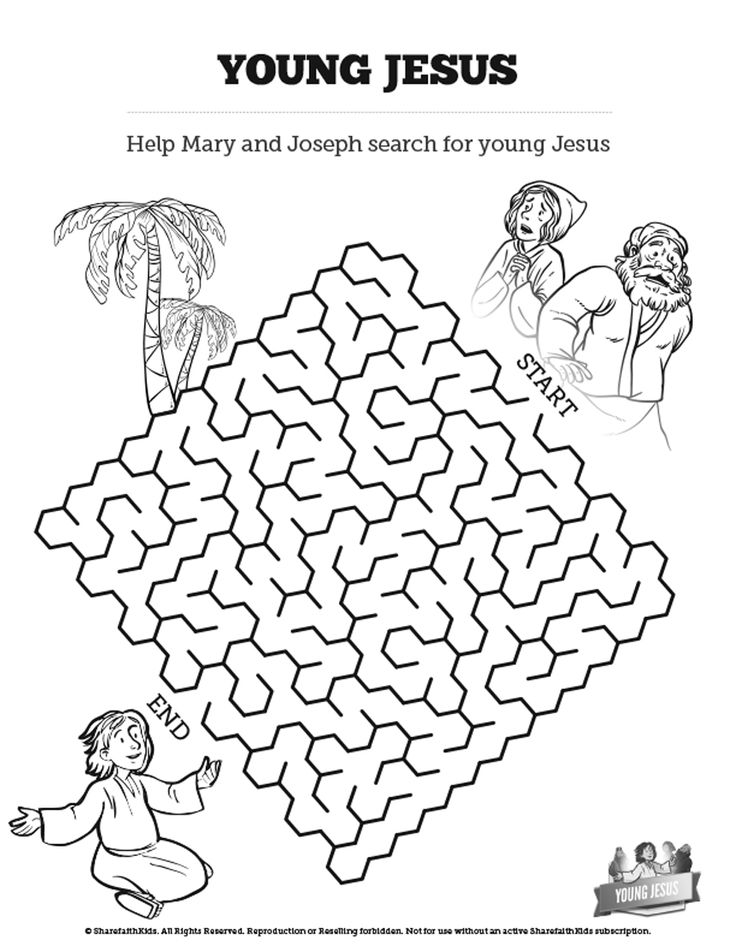 Bock falsely tries to use this quote, but one of the ancestors of Jesus Christ - Jesse, father of King David "And a branch will come from the root of Jesse, and a branch will grow from his root" (Is.11:1). And not the Nazarene sect of the Essenes, which, according to the false statement of E. Bock, "set as a goal, first of all, the maintenance of pure heredity: for the incarnation of the Messiah, it was necessary to prepare a vessel of pure physicality," but the Lord God Himself, without the intervention and help of the Nazarene Essenes, created Jesus Christ Pure and immaculate spiritually and bodily.
Bock falsely tries to use this quote, but one of the ancestors of Jesus Christ - Jesse, father of King David "And a branch will come from the root of Jesse, and a branch will grow from his root" (Is.11:1). And not the Nazarene sect of the Essenes, which, according to the false statement of E. Bock, "set as a goal, first of all, the maintenance of pure heredity: for the incarnation of the Messiah, it was necessary to prepare a vessel of pure physicality," but the Lord God Himself, without the intervention and help of the Nazarene Essenes, created Jesus Christ Pure and immaculate spiritually and bodily.
Falsely asserting that it was allegedly for the Essenes "to incarnate the Messiah that a vessel of pure corporality should have been prepared" E. Bock in this regard also applies to the Virgin Mary. Thus, they sought to preserve childish innocence in social relations. It may well be that, according to tradition, Mary, from the Gospel of Luke, when She was given as a wife to the Nazarene carpenter, Joseph, was barely twelve years old ”(E.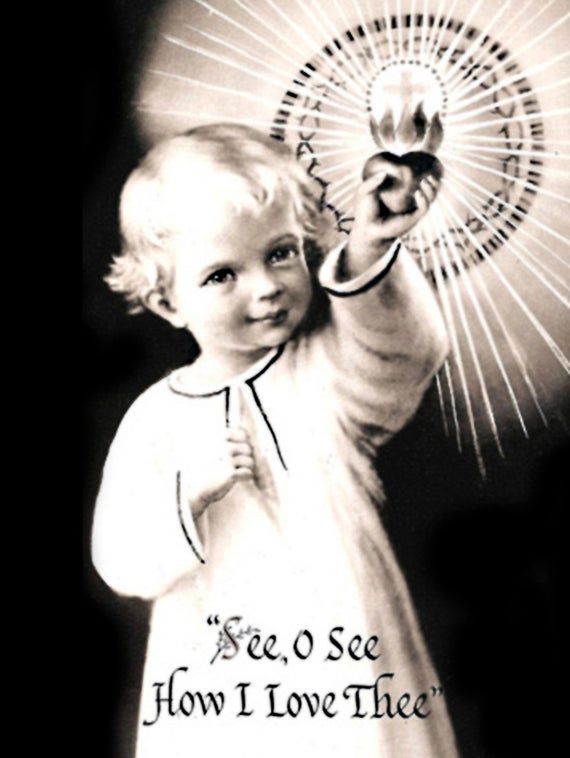 Bock, specified edition, p. 122).
Bock, specified edition, p. 122).
According to the Gospel and Church tradition, it was not the Essene community from Nazareth, but the high priests from Jerusalem who betrothed the Virgin Mary to Joseph. And such a betrothal happened not because in the Essenes sect “it was customary to marry people at a very young age”, but because the Virgin Mary, upon reaching the age, could not remain at the Jerusalem temple, according not to Esean views, but to ancient Jewish customs. And speaking of that, that “it was apparently customary for the Essenes to marry people at a very young age” and, linking this Esean institution with the betrothal of the Virgin Mary and Joseph, E. Bock again distorts the facts, because in fact there was no marriage between the Mother of God and Joseph, and The Mother of God has been a Virgin all her life. And also because only the Virgin Mary was young in this betrothal, and Joseph was old. Therefore, it is incorrect to speak of the marriage of “people (two) at a very young age” in relation to the Virgin Mary and Joseph.
According to the false and unsubstantiated assertion of E. Bock, the Evangelist Matthew was allegedly a sectarian Essen. "But since the Evangelist Matthew himself came from the community of Essenes (his name is identical to the name of Matthew, one of the five disciples of Joshua Ben Pandara), then the genealogy given at the beginning of the first Gospel has at the same time the form of an Esean meditative table. "(E. Bock, specified edition, 124). The absurdity of this statement is refuted by the fact that the Scripture clearly states that Matthew never belonged to the Essenes sect, and was a tax collector before meeting Jesus Christ. named Matthew, and said to him, Follow me. And he got up and followed Him” (Mat. 9:9).
Also incorrectly and without evidence, E. Bock speaks of the influence of the Essenes sect in Nazareth on the Holy Family and on the child, Jesus Christ. “When the carpenter Joseph returned with his family to Nazareth and again plunged into the quiet life of the Esean community, the time for the dreamer to the earthly world began for the child” (E.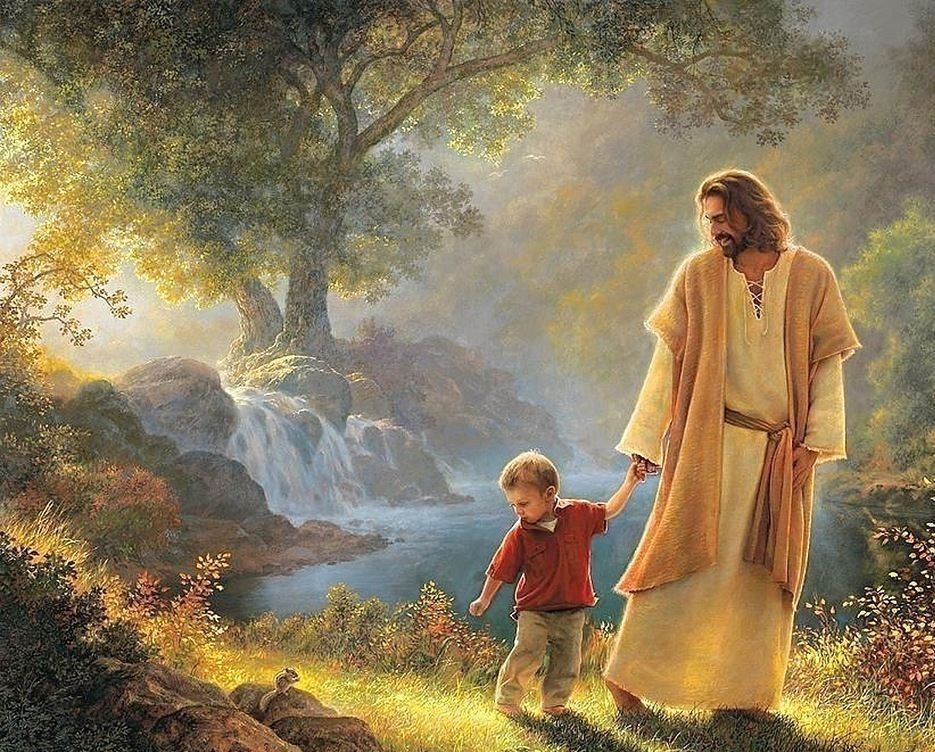 Bock, specified edition, p. 132). Using the example of E. Bock’s false reasoning, we see how the absence in the Gospels of detailed information about the childhood of Jesus Christ was used to substantiate heretical concepts, in this case, to ineptly justify the views of the occultists and Essenes.0003
Bock, specified edition, p. 132). Using the example of E. Bock’s false reasoning, we see how the absence in the Gospels of detailed information about the childhood of Jesus Christ was used to substantiate heretical concepts, in this case, to ineptly justify the views of the occultists and Essenes.0003
The above legends and traditions mention examples in which Jesus Christ as a child can work miracles, heal, etc., which allegedly confirmed His Divine properties. But there are also apocrypha in which the Divine image of Jesus Christ the child is deliberately distorted. Using the lack of information about the childhood of Jesus Christ in the Gospels, opponents of Christianity, with the help of their false stories, attributed to Jesus Christ the child traits that were not characteristic of Him, such as revenge, cruelty, tyranny, evil.
The falsity of these stories is proved by the idea that Jesus Christ could not commit evil deeds even in childhood, as this contradicts His Divine teaching.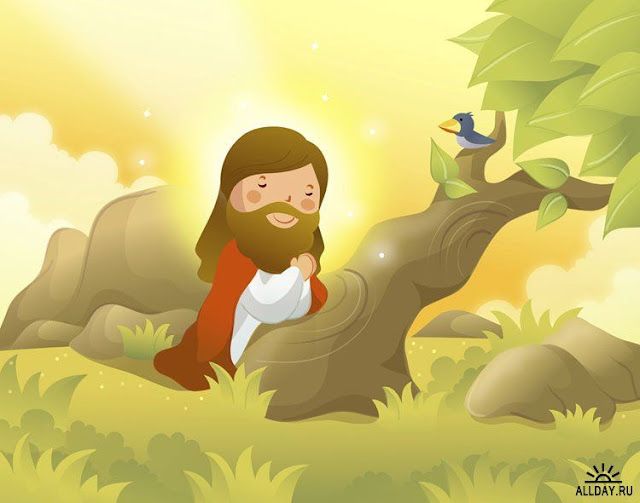 Here is a brief mention of episodes from such apocrypha. "But how unlike this (true) image is the boy Jesus of the New Testament apocrypha! He is playful, restless, impudent, vengeful. Some of the miracles attributed to Him are simply aimless and childish. As, for example, when He brings spilled water in His clothes, pulls out a board to the proper length, molds sparrows out of clay, and clapping his hands, makes them fly, throws all His garments into the dyer's vat and takes them out dyed each in its own color.But some are even indecent and foolish. and silences those who want to teach Him, or when He reproaches Joseph, turns His playmates into goats. a storm of popular indignation rises, and Mary is afraid to let him out of the house.With careful research, among all these coarse, tasteless and often harmful fabrications, one can find only one story in which which a genuine feeling peeps through and is a correspondence to the truth, and it can only be cited here, because it is, in any case, harmless, and may even be partly based on some fact preserved in tradition.
Here is a brief mention of episodes from such apocrypha. "But how unlike this (true) image is the boy Jesus of the New Testament apocrypha! He is playful, restless, impudent, vengeful. Some of the miracles attributed to Him are simply aimless and childish. As, for example, when He brings spilled water in His clothes, pulls out a board to the proper length, molds sparrows out of clay, and clapping his hands, makes them fly, throws all His garments into the dyer's vat and takes them out dyed each in its own color.But some are even indecent and foolish. and silences those who want to teach Him, or when He reproaches Joseph, turns His playmates into goats. a storm of popular indignation rises, and Mary is afraid to let him out of the house.With careful research, among all these coarse, tasteless and often harmful fabrications, one can find only one story in which which a genuine feeling peeps through and is a correspondence to the truth, and it can only be cited here, because it is, in any case, harmless, and may even be partly based on some fact preserved in tradition. It is found in the "Arabic Gospel of Childhood" and reads as follows: "In the month of Adar, Jesus gathered the boys together as if He were their king. They sent out their garments and He sat on them. Then they placed on His head a crown woven of flowers, and like courtiers serving a king, they stood in rows before him on His right hand and on His left hand. And everyone who passed that way, the boys seized by force, shouting: come here and bow to the king, and then go on your way ”(F.V. Farrar "The Life of Jesus Christ", St. Petersburg, edition of the bookseller I.L. Tuluzov, 1893, pp. 33-34).
It is found in the "Arabic Gospel of Childhood" and reads as follows: "In the month of Adar, Jesus gathered the boys together as if He were their king. They sent out their garments and He sat on them. Then they placed on His head a crown woven of flowers, and like courtiers serving a king, they stood in rows before him on His right hand and on His left hand. And everyone who passed that way, the boys seized by force, shouting: come here and bow to the king, and then go on your way ”(F.V. Farrar "The Life of Jesus Christ", St. Petersburg, edition of the bookseller I.L. Tuluzov, 1893, pp. 33-34).
But even in the episode from the "Arabic gospel of childhood" indicated by Farrar, there is violence. And this means that this episode cannot be true, since Jesus Christ did not use violence, even during His childhood. Therefore, briefly familiarizing ourselves with the legends , legends, legends and apocrypha, aimed at both exaltation and deliberate distortion of the image of Jesus Christ as a child, we can say that they are not reliable, as they contradict His teaching, His character, described by the Evangelists.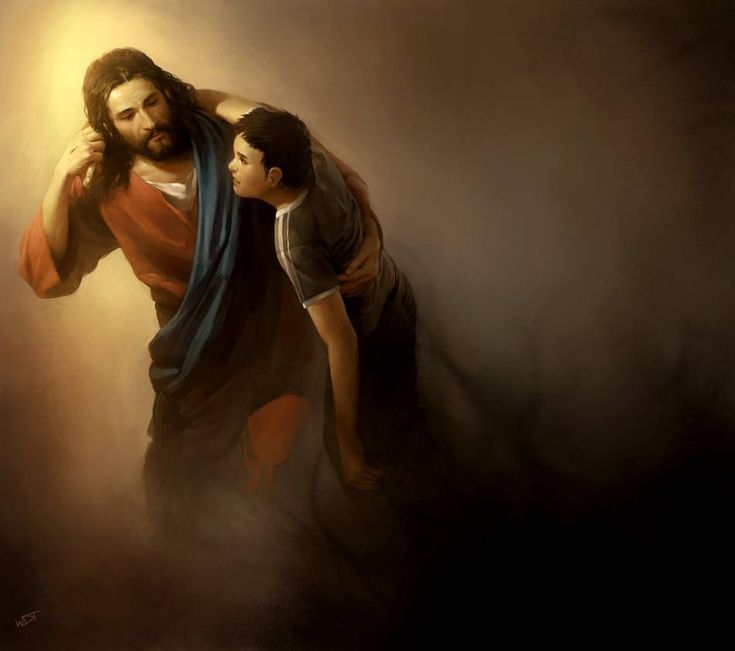 0003
0003
The unreliability of these stories is irrefutably confirmed by the idea that Jesus Christ, even a child, will not perform miracles aimed at praising Him. These miracles are like the tricks of a fakir. For example, the revival of birds, the coloring of clothes. Jesus Christ, even as a child, will not perform pointless miracles such as carrying water in his clothes. And still less will the Savior use miracles to avenge His fellows or forcefully worship Himself as king.
If the above episodes from legends and apocrypha falsely describe the actions of the child Jesus Christ, then what was He really like? With deep reverence and reverence, many true and good Christians want to know the answer to this question. What was the childhood of the Savior of the world and the Messiah really like?
In order to answer this question, let us turn to the sacred texts of the Bible. Only Evangelists, as God-enlightened writers, unlike the authors of various legends and apocrypha, can tell the true truth about the teachings and life, including the childhood of Jesus Christ.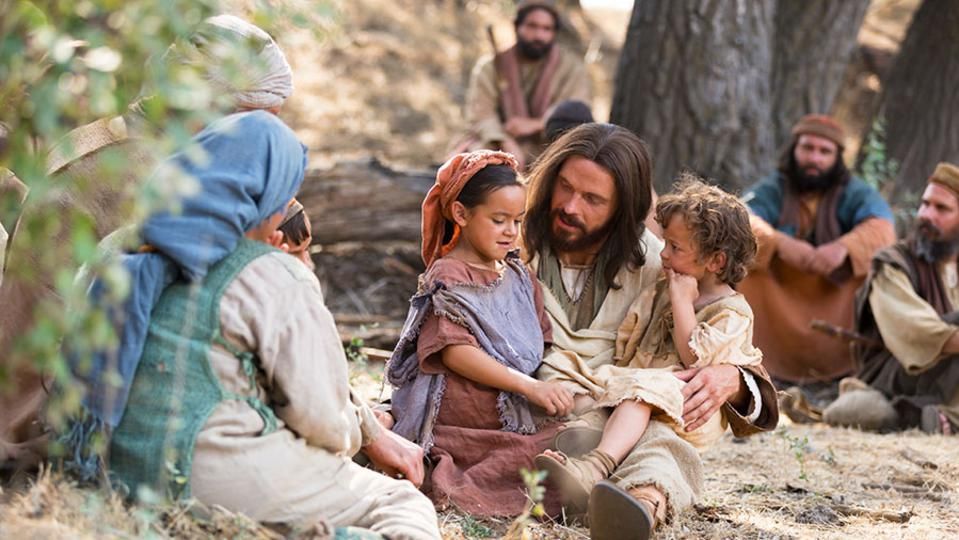 Apocryphal writers, or creators of legends, traditions and beliefs, deprived of Divine grace, even with good intentions, can inadvertently distort the life of the Savior. Therefore, no matter how magnificent and colorful their stories about the aimless power of the child, Jesus Christ, all their colorfulness and variegation fades in comparison with the noble simplicity of the meaningful silence of the Evangelists regarding the childhood years of the Savior. Because such silence in its truthfulness is much better than distortions and conjectures, humiliating and distorting the events associated with the childhood of Jesus Christ.
Apocryphal writers, or creators of legends, traditions and beliefs, deprived of Divine grace, even with good intentions, can inadvertently distort the life of the Savior. Therefore, no matter how magnificent and colorful their stories about the aimless power of the child, Jesus Christ, all their colorfulness and variegation fades in comparison with the noble simplicity of the meaningful silence of the Evangelists regarding the childhood years of the Savior. Because such silence in its truthfulness is much better than distortions and conjectures, humiliating and distorting the events associated with the childhood of Jesus Christ.
So, as the theologians say, all four Evangelists are unanimously silent about the events of the childhood of Jesus Christ. But how much more eloquent and significant this silence is than all the conjectures of the apocrypha and legends that distort the appearance of the child, Jesus Christ! The unanimous restraint of the Evangelists regarding the childhood of Jesus Christ contains more truth, wisdom and edification than many volumes that would be filled with numerous, non-existent details of the childhood of the Savior. Evangelists are, first of all (unlike other authors), people called for a true description of the life and teachings of Jesus Christ, who have on themselves the Grace of God. “For prophecy was never uttered by the will of man, but holy men of God spoke as they were moved by the Holy Spirit” (2 Pet. 1:21). They convey to us the truth that they speak of with their eloquent silence. , is for us a revelation of God, like everything else that the Evangelists told us about, since the goal of the Evangelists, unlike the authors of apocrypha and legends, is to show not fiction, but the truth.Therefore, if in the childhood of Jesus Christ there would be some or miracles or significant events, the Evangelists would certainly describe them.The fact that no miraculous events were connected with the childhood of the Savior is evidenced by the fact that all four Evangelists, who set themselves the goal of telling truthfully about Jesus Christ, unanimously bypass the period of childhood in silence This happens because there were no miracles or significant events in the childhood of the Savior of the world.
Evangelists are, first of all (unlike other authors), people called for a true description of the life and teachings of Jesus Christ, who have on themselves the Grace of God. “For prophecy was never uttered by the will of man, but holy men of God spoke as they were moved by the Holy Spirit” (2 Pet. 1:21). They convey to us the truth that they speak of with their eloquent silence. , is for us a revelation of God, like everything else that the Evangelists told us about, since the goal of the Evangelists, unlike the authors of apocrypha and legends, is to show not fiction, but the truth.Therefore, if in the childhood of Jesus Christ there would be some or miracles or significant events, the Evangelists would certainly describe them.The fact that no miraculous events were connected with the childhood of the Savior is evidenced by the fact that all four Evangelists, who set themselves the goal of telling truthfully about Jesus Christ, unanimously bypass the period of childhood in silence This happens because there were no miracles or significant events in the childhood of the Savior of the world. Therefore, the Evangelists bypassed the period of the childhood of Jesus Christ in silence.0003
Therefore, the Evangelists bypassed the period of the childhood of Jesus Christ in silence.0003
The absence of any miracles associated with childhood is also confirmed by the prophecies about Jesus Christ. "For He has come up before Him as a offspring and as a sapling out of dry ground; there is neither form nor majesty in Him; and we have seen Him, and there was no form in Him that would draw us to Him" (Isaiah 53:2 ) The word "offspring" refers to a descendant. And in this case, Jesus Christ is called a descendant, that is, the Son of God. In most cases, a sprout from dry land appears without lush flowering. So the Savior of the world appeared, that is, he had childhood and youth without any miraculous events, and lived quietly and imperceptibly. Another prophecy about Jesus Christ says: “But He humbled Himself, taking the form of a servant, becoming in the likeness of men, and becoming in appearance like a man” (Phil. 2:7). and a magnificent life, slaves live quietly and imperceptibly. So Jesus Christ lived all his life quietly and humbly, saving and enlightening people, despite the fact that He Himself suffered for it. Therefore, the childhood of Jesus Christ, who lived a humble life of a slave (a simple man) , and not a noble gentleman (rich man), had no miracles and adventures. And unlike the gods of pagan religions, whose biographies abound in theatrical effects, the life of the Savior of the world, our Lord Jesus Christ, was distinguished by modesty and humility. The Gospel itself says that After returning to Nazareth, the Holy Family lived in obscurity and modesty.Naturally, therefore, the Savior's childhood was distinguished by a quiet and humble life.And if you thoughtfully analyze and explain these words of the Gospel, you can get a short but truthful answer (from the lips of an Evangelist, and not just a writer) about how the Savior spent his childhood.
So Jesus Christ lived all his life quietly and humbly, saving and enlightening people, despite the fact that He Himself suffered for it. Therefore, the childhood of Jesus Christ, who lived a humble life of a slave (a simple man) , and not a noble gentleman (rich man), had no miracles and adventures. And unlike the gods of pagan religions, whose biographies abound in theatrical effects, the life of the Savior of the world, our Lord Jesus Christ, was distinguished by modesty and humility. The Gospel itself says that After returning to Nazareth, the Holy Family lived in obscurity and modesty.Naturally, therefore, the Savior's childhood was distinguished by a quiet and humble life.And if you thoughtfully analyze and explain these words of the Gospel, you can get a short but truthful answer (from the lips of an Evangelist, and not just a writer) about how the Savior spent his childhood.
The holy family, forced to settle in the small provincial town of Nazareth, lived in modesty and obscurity.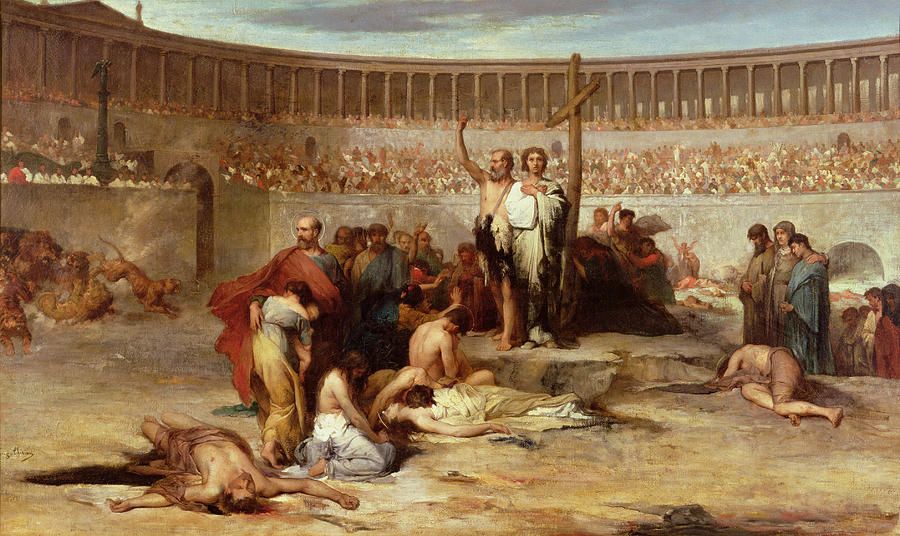 Such a way of life had to be carried out also in order not to attract the attention of Herod Antipas and his henchmen. After all, Jesus Christ, unlike Herod and his family, was a descendant of the legitimate king and belonged to the royal family of King David. The childhood of the Savior was also marked by the fact that His family lived in a country enslaved by the Roman conquerors. And in the most despised even among the Jews, the city of Nazareth. That is to say, the Savior truly “taking the form of a servant” and, having humbled Himself, lived modestly and quietly in obscurity in the provinces, spending thirty years of His life preparing Himself for His public ministry.
Such a way of life had to be carried out also in order not to attract the attention of Herod Antipas and his henchmen. After all, Jesus Christ, unlike Herod and his family, was a descendant of the legitimate king and belonged to the royal family of King David. The childhood of the Savior was also marked by the fact that His family lived in a country enslaved by the Roman conquerors. And in the most despised even among the Jews, the city of Nazareth. That is to say, the Savior truly “taking the form of a servant” and, having humbled Himself, lived modestly and quietly in obscurity in the provinces, spending thirty years of His life preparing Himself for His public ministry.
So, in the childhood of Jesus Christ there were no unusual miracles. There was no sevenfold choir of praises and glorifications of Him as the Messiah and the King of the Jews. Nevertheless, a brief, but truthful, capacious and exhaustive description of the childhood of Jesus Christ is present in the Gospels. In order to be able to see the characteristics of the childhood of the Savior, one must carefully read the Gospel and be able to correctly understand it. If the Evangelists John and Mark bypass the period of the childhood and youth of the Savior in silence, and Matthew speaks of the Holy Family, including the Savior, that they lived in Nazareth, then Luke describes one single, precious episode from the childhood of Jesus Christ, associated with a visit to the Jerusalem temple . And he gives a capacious and accurate description of the childhood of the Savior. “But the child grew and became strong in spirit, filled with wisdom, and the grace of God was upon Him” (Luke 2:40). “Jesus grew in wisdom and stature, and in love with God and men” (Luke 2:52).
In order to be able to see the characteristics of the childhood of the Savior, one must carefully read the Gospel and be able to correctly understand it. If the Evangelists John and Mark bypass the period of the childhood and youth of the Savior in silence, and Matthew speaks of the Holy Family, including the Savior, that they lived in Nazareth, then Luke describes one single, precious episode from the childhood of Jesus Christ, associated with a visit to the Jerusalem temple . And he gives a capacious and accurate description of the childhood of the Savior. “But the child grew and became strong in spirit, filled with wisdom, and the grace of God was upon Him” (Luke 2:40). “Jesus grew in wisdom and stature, and in love with God and men” (Luke 2:52).
Judging by these words, the Infant Jesus Christ lived without showing any special abilities and performed no miracles. He did not have any miraculous "infinite" knowledge, but gradually gained wisdom, "filled with wisdom," as Luke says. Developed like an ordinary child "The baby grew." He had the usual spiritual development "and was strengthened in spirit." But the distinguishing feature of the child, Jesus Christ, was that He, unlike other children, was blameless. Therefore, Luke writes that “The Grace of God was on Him.” And a person who has the Grace of God on himself is distinguished by meekness and kindness, love for his neighbors and modesty. This is how the Savior of the world, Jesus Christ, was in childhood. Having these qualities, Jesus Christ "succeeded in wisdom", that is, he was distinguished by his mind, a well-developed intellect. He prospered in "age", that is, he developed normally, without any diseases and deviations. And for His meek and peaceful disposition, he prospered "in the love of God and people." That is, the child, Jesus Christ, did such good deeds for which he had the favor of God and people.
Developed like an ordinary child "The baby grew." He had the usual spiritual development "and was strengthened in spirit." But the distinguishing feature of the child, Jesus Christ, was that He, unlike other children, was blameless. Therefore, Luke writes that “The Grace of God was on Him.” And a person who has the Grace of God on himself is distinguished by meekness and kindness, love for his neighbors and modesty. This is how the Savior of the world, Jesus Christ, was in childhood. Having these qualities, Jesus Christ "succeeded in wisdom", that is, he was distinguished by his mind, a well-developed intellect. He prospered in "age", that is, he developed normally, without any diseases and deviations. And for His meek and peaceful disposition, he prospered "in the love of God and people." That is, the child, Jesus Christ, did such good deeds for which he had the favor of God and people.
Here is such a capacious, albeit brief, description of the childhood of Jesus Christ given by the Evangelist Luke. It is enough to explain and understand it in order to clearly imagine how the childhood of Jesus Christ proceeded. Therefore, the Evangelist John the Theologian, considering this characterization of childhood true and sufficient, and agreeing with it, did not add anything else to it, without expanding it with his silence.
It is enough to explain and understand it in order to clearly imagine how the childhood of Jesus Christ proceeded. Therefore, the Evangelist John the Theologian, considering this characterization of childhood true and sufficient, and agreeing with it, did not add anything else to it, without expanding it with his silence.
So, according to the image of the Gospel, the child, Jesus Christ, is simple and modest in dealing with people, obedient to God and parents. And the Grace of God rests on Him. By His good deeds He won the love of God and people. He normally grows and develops "he grew and strengthened in spirit, being filled with wisdom." That is, He has normal spiritual and mental development, and He learns the world around him, acquires human knowledge and experience. He does only good deeds, is engaged in peaceful work, or in the pasture or helping his father in his work, or helping the family around the house.He loves all people, tries to help each person.That is, He outwardly lives in the same way as other children of ordinary parents, waiting for His great hour, associated with the implementation of His Saving mission .
Since the childhood of Jesus Christ proceeded in the same way as other boys of His age and social position who lived in Nazareth, knowing the way of life of this city, for the most curious readers, one can presumably describe an approximate routine for Jesus Christ a child.
He lived like most children of ordinary parents. He wore a white tunic or a white shirt of a spacious cut. Ate simple rural, but healthy and tasty food. He led an established patriarchal life in a small provincial town. He drank clean water from a nearby spring. He fed the pigeons that basked on the roof of His house.
The house in which His family lived was a one-story building. Before entering the house, they took off their sandals and entered the house barefoot. The floor of the house was covered with wicker matting. Under the ceiling of the house, as a decoration of the room, a lamp-lamp hung. Shelves were placed along the walls in niches, on which pottery stood. By the window stood a bookcase filled with books of Scripture. Along the walls were couches with neatly folded quilts. Near the door stood on a stool a large earthenware jug of water. To add smell and coolness, several branches with green leaves, plucked from aromatic bushes, were placed in the water.
Along the walls were couches with neatly folded quilts. Near the door stood on a stool a large earthenware jug of water. To add smell and coolness, several branches with green leaves, plucked from aromatic bushes, were placed in the water.
Before breakfast, lunch or dinner, the whole family washed their hands from a copper jug over a copper basin. Then a painted table was placed in the middle of the room, and the family sat down at it. On a large tray, the youngest of the family brought various dishes and placed them in front of those present. The Nazarenes usually ate boiled rice, liban, or fruit stew, as well as deliciously prepared dishes of vegetables and fruits. So a peaceful and quiet life flowed, which was calm and joyful.
It was said that the child, Jesus Christ, often woke up very early and climbed onto the roof of the shed to feed and let fly His doves, whom He loved very much. Then he carefully examined the vines that weaved along the walls of the house. Then He helped drive the sheep out into the common flock. If on that day it was not His turn to be in the pasture as a shepherd, he helped Joseph in the workshop, which was located in the courtyard. Therefore, He mastered the profession of a carpenter. When there was no work in the workshop, He went out to play outside with his peers. And on Saturdays I went to the synagogue. The Virgin Mary, like the rest of the women of Her position, spun, cooked food. Every evening with an earthenware jug I went to the spring, which even today is shown to tourists and pilgrims and is called the "Virgin's spring". Jesus Christ, as a child, as they said, was sinless from childhood. yield, in everything he was an obedient and meek child with large pensive eyes and a swarthy face.0003
If on that day it was not His turn to be in the pasture as a shepherd, he helped Joseph in the workshop, which was located in the courtyard. Therefore, He mastered the profession of a carpenter. When there was no work in the workshop, He went out to play outside with his peers. And on Saturdays I went to the synagogue. The Virgin Mary, like the rest of the women of Her position, spun, cooked food. Every evening with an earthenware jug I went to the spring, which even today is shown to tourists and pilgrims and is called the "Virgin's spring". Jesus Christ, as a child, as they said, was sinless from childhood. yield, in everything he was an obedient and meek child with large pensive eyes and a swarthy face.0003
In all ages, true Christians who wanted to know about the Savior (including about His childhood as much as possible) for answers to their questions turned not to dubious legends and heretical apocrypha, but to God. "It is written ... that once there lived a very pious and very God-fearing bishop, who often and earnestly prayed that God would reveal to him how Jesus Christ spent His youth. And one day the bishop had such a dream. It seemed to him in his dream that he sees a carpenter at his trade and next to a little boy who collects wood chips.Then came the Virgin, dressed in green, and called them to dinner and served them stew.All this seemed to the bishop, he sees in a dream, and he himself stands outside the door so as not to be seen, but the boy suddenly said, “Why is this man standing there? Why doesn't he come to dine with us? And this so frightened the bishop that he woke up. Whatever it was, truth or fable, one can still think that Jesus Christ in His childhood lived and acted like all other children, although without sin, in the image of a man” (F.V. Farrar, “Life Jesus Christ, cited edition, pp. 36-37)
And one day the bishop had such a dream. It seemed to him in his dream that he sees a carpenter at his trade and next to a little boy who collects wood chips.Then came the Virgin, dressed in green, and called them to dinner and served them stew.All this seemed to the bishop, he sees in a dream, and he himself stands outside the door so as not to be seen, but the boy suddenly said, “Why is this man standing there? Why doesn't he come to dine with us? And this so frightened the bishop that he woke up. Whatever it was, truth or fable, one can still think that Jesus Christ in His childhood lived and acted like all other children, although without sin, in the image of a man” (F.V. Farrar, “Life Jesus Christ, cited edition, pp. 36-37)
From all that has been said, it is clear that the childhood of Jesus Christ was devoid of any entertaining adventures that are often found in the biographies of pagan gods and heroes (for example, Hercules, who defeated huge snakes in childhood, etc.).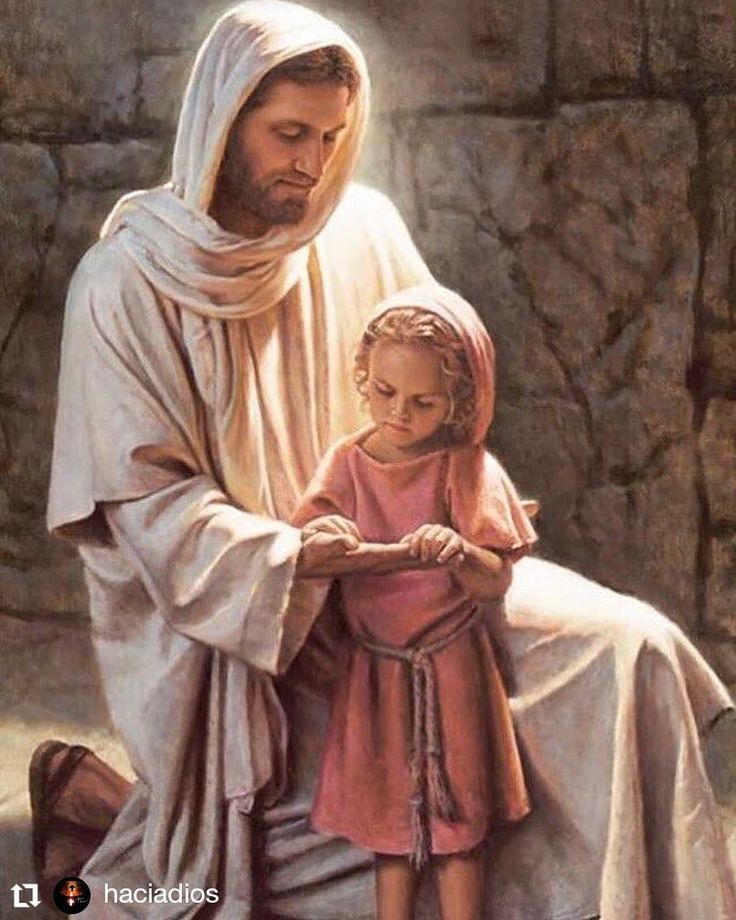 On the contrary, according to the most reliable source, the Holy Text of the Gospel, the childhood of Jesus Christ was simple and ordinary, like that of most people. This is explained by the fact that, like His humane and philanthropic teaching, Jesus Christ was close to the people whom He came to enlighten and save.
On the contrary, according to the most reliable source, the Holy Text of the Gospel, the childhood of Jesus Christ was simple and ordinary, like that of most people. This is explained by the fact that, like His humane and philanthropic teaching, Jesus Christ was close to the people whom He came to enlighten and save.
What did Jesus Christ do in his childhood
With the kind care of the female companions, Mary gave birth to the boy Jesus. The mother wrapped the child in clothes and placed him in a nearby nursery. The promised child was born, like all babies. On the 8th day, as befits the Jews, he was circumcised and named Jesus of Nazareth.
Mary throughout her childhood carefully supported her child, protecting him from various dangers that could endanger his well-being or interfere with his future mission. She was the most devoted mother on earth. During the first two years of Jesus' life, the family lived in Alexandria.
The boy was not ill and continued to grow normally. In those years, almost no one knew that Mary and Joseph were growing the promised child. When Jesus was three years and two months old, the family returned to Nazareth. The kid endured the difficult journey very well. In Nazareth, he was very glad that he had his own room where he could run and play. But he missed his Alexandrian playmates.
In those years, almost no one knew that Mary and Joseph were growing the promised child. When Jesus was three years and two months old, the family returned to Nazareth. The kid endured the difficult journey very well. In Nazareth, he was very glad that he had his own room where he could run and play. But he missed his Alexandrian playmates.
Time passed and Jesus was 5 years old. In order for the boy to receive a moral education, he needed a spiritual mentor. Jesus knew about the coming from his Divine Father, who penetrated into his mind for the final spiritualization of the mind. From his mother, Jesus learned to speak the Galilean dialect of Aramaic. When he was six years old, his father began to teach him to speak Greek. Mary could also speak Greek, but not perfectly, as Joseph did. Joseph was also fluent in Aramaic.
Jesus received his only childhood trauma at the age of 7. He fell down the stone stairs while playing with the boys in the backyard. Stone steps led to a bedroom with a fabric roof.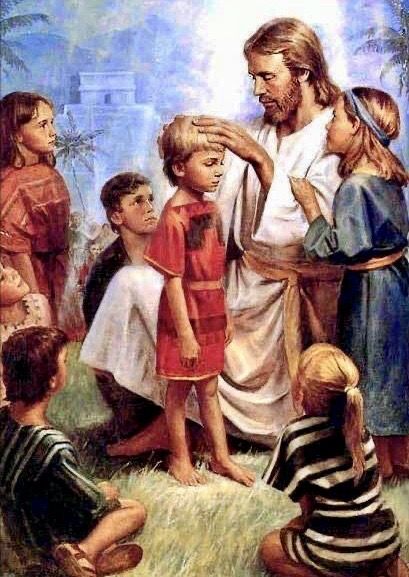 Until the age of 10, Jesus studied at the elementary school, which was attached to the Nazareth synagogue.
Until the age of 10, Jesus studied at the elementary school, which was attached to the Nazareth synagogue.
There he studied the fundamentals of the Book of the Law, written in Hebrew. The training took place over three years. Jesus was never seriously ill as a child, but minor ailments still overtook him. When he was 9 years old, he was sick along with his brothers and younger sister. While studying at school, Jesus had one week a month free from lessons. Then he either traveled with his father to neighboring cities, or helped his uncle on the farm, which was located south of Nazareth. He could also devote his free time to fishing.
Nazareth once experienced three very cold winters in many decades. That was the first time Jesus saw snow on the mountains. Snow even fell in Nazareth itself and remained on the ground. The boy saw ice for the first time. He thought for a long time about the fact that water can be solid, liquid and come out of boiling boilers in the form of steam.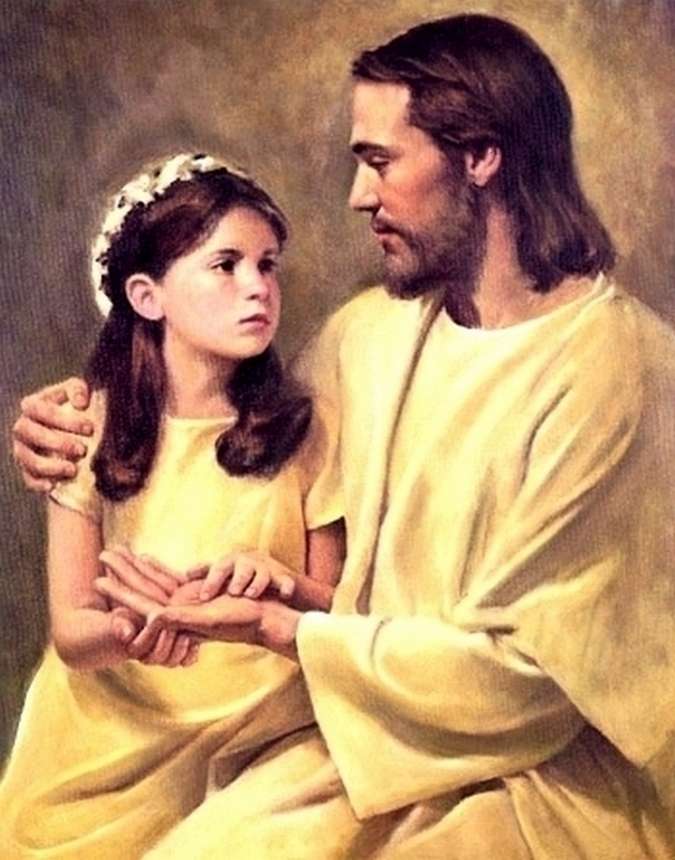 After that, he thought for a long time about the physical world and its structure.
After that, he thought for a long time about the physical world and its structure.
He felt that the person inside his body was the actual creator and organizer of all this in the vast universe. One day, while walking with his father in the countryside, Jesus for the first time expressed feelings and ideas that indicated his eccentricity. He was embarrassed about his mission in life. But his father did not tell him the whole truth. The next day, Jesus turned to Mary with a similar question, but her mother did not say anything to him either. Only two years later, Jesus again approached his parents with this question. He became increasingly concerned about the increasing revelation in his mind regarding the nature of his personality and his destiny on earth.
At the age of 12, Jesus continued to study at school. He tirelessly studied nature, as well as the methods by which people earn their living. Often he had doubts and uncertainty about the nature of his mission.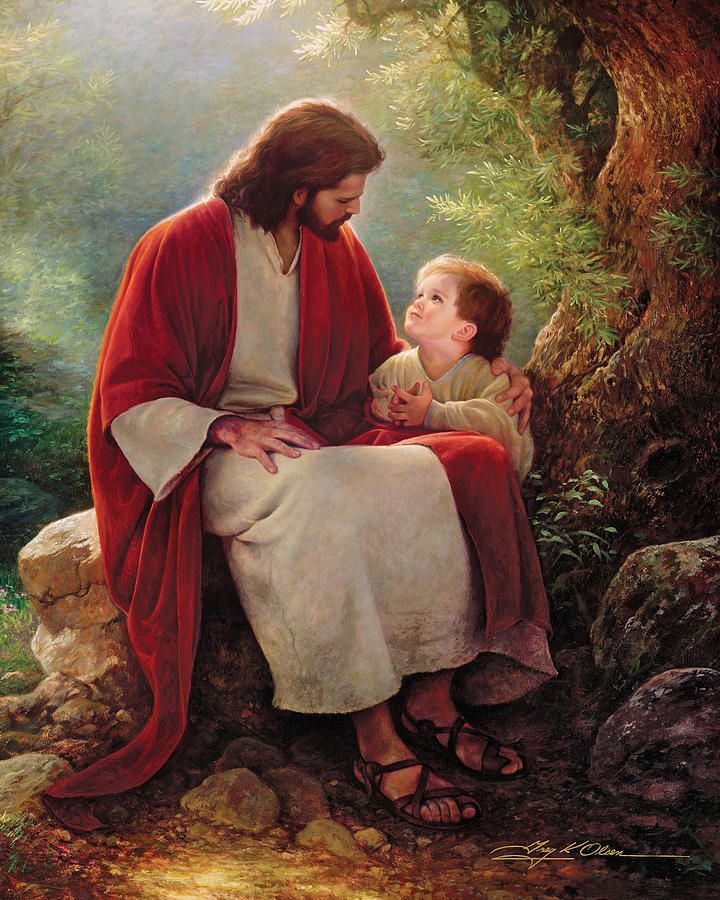 His human mind has not yet realized the reality of his dual nature.
His human mind has not yet realized the reality of his dual nature.
At the age of 13, Jesus' voice began to break, and he passed from childhood to youth. Along with the voice, other features of the body and mind began to change. Approaching the status of masculinity. After graduating from synagogue school, Jesus went to Jerusalem with his father and mother. There he was to celebrate his first Easter.
The holiday was held on Saturday 9 April. The young Jesus was very impressed with the temple, all the services associated with it, and other religious activities.
Before that, he was absorbed only by his own meditations. After visiting the temple, he asked Joseph some uncomfortable questions about why Heavenly Father required so many helpless animals to be sacrificed. The father's answers did not satisfy the son. A visit to Jerusalem was the most exciting experience of his entire childhood.
The 14th and 15th years of Jesus' life were the most important in his development.